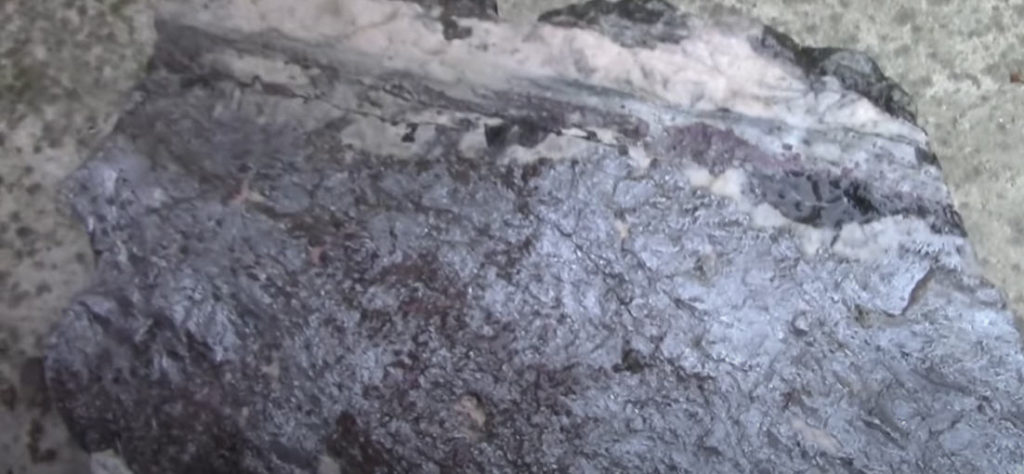Silver metal detecting
A 6.5 Lb. slab of silver ore (mixed with cobalt), found metal detecting at an old silver mine.
Wow, imagine out metal detecting and finding a 6.5 pound slab of native silver!
Silver metal detecting

silver slab
From Wikipedia, the free encyclopedia:
Silver ore was first discovered in west-central Arizona in 1583 by Spanish explorer Antonio de Espejo, but no mining resulted. Again in 1598, Juan de Oñate led another expedition searching for Espejo’s silver; many claims were staked, but the expeditioners returned to Santa Fe without mining any silver, and the deposits remained unexploited. Espejo’s silver discovery is thought to be at the site of present-day Jerome, which later became a major copper-mining district.
Father Eusebio Kino, in charge of the Spanish missions in southern Arizona from 1687 to 1711, noted a number of “minas” in the mountains bordering the Santa Cruz valley (present Santa Cruz County, Arizona), but the Spanish word “mina” can mean either a mine or an unexploited mineral deposit. A noted silver discovery in 1736 at Planchas de Plata, Sonora, just south of the present Arizona/Sonora border drew attention to the silver potential of the area. Later Spanish documents record mining in the 1770s in Quijotoa, Arabic, and Arivaca, in southernmost Arizona. Mining was held back because Arizona was the northern fringe of the Spanish frontier, and plagued by guerilla war with the Apaches.
Silver was discovered at Globe in 1873, and within three years numerous other silver mines were operating near Globe, Pinal, and McMillenville, in Gila and Pinal counties.
A soldier named Sullivan discovered native silver while building a military road in central Arizona. Sullivan returned to the area after he left the army, but could not relocate the outcrop. However, Sullivan told his story to rancher named Mason, who with four others found Sullivan’s lost silver lode 3 miles (4.8 km) north of present-day Superior, and started the Silver King Mine in 1875. The Silver King mine operated from 1875 to 1889, and again 1918 to 1928, producing 6.2 million troy ounces (190 metric tons) of silver.
The success of the Silver King drew other prospectors, who discovered the Silver Queen mine nearby. The Silver Queen shut down around 1893. Investors bought the property in 1910, renamed the Silver Queen the Magma mine, and started mining the rich copper ores that the silver miners had ignored. The Magma copper mine became one of the most productive copper mines in Arizona, and through 1964, produced more than 25 million troy ounces (780 metric tons) of silver as a byproduct of copper mining.
Miners exhausted the best silver ores in the area by the mid-1880s, most of the mines closed, and most of the towns were deserted. But attention turned to copper veins, and the former “Arizona silver belt” became the rich Globe-Miami and Superior copper districts.
#######
Be sure to view our Gold nuggets for sale.
View our Natural Silver specimens
Also see the most expensive type of gold nuggets, the Crystalline Gold Nuggets
Subscribe to our Youtube Arizona Gold Prospecting channel
0 Comments